Related Research Articles

Dejima or Deshima, in the 17th century also called Tsukishima, was an artificial island off Nagasaki, Japan that served as a trading post for the Portuguese (1570–1639) and subsequently the Dutch (1641–1854). For 220 years, it was the central conduit for foreign trade and cultural exchange with Japan during the isolationist Edo period (1600–1869), and the only Japanese territory open to Westerners.

William Adams, better known in Japan as Miura Anjin, was an English navigator who, in 1600, was the first Englishman to reach Japan. He did so on a trading ship called de Liefde under the leadership of Jacob Quaeckernaeck; it was the only surviving vessel from a five-ship expedition launched by a company of Rotterdam merchants. Among the few survivors of the expedition who reached Japan, the authorities did not allow Adams and his second mate Jan Joosten to leave the country; Japan had been a closed society. They did permit Quaeckernaeck and Melchior van Santvoort to return to the Dutch Republic to establish formal trade relations.

Nagasaki Prefecture is a prefecture of Japan located on the island of Kyūshū. Nagasaki Prefecture has a population of 1,314,078 and has a geographic area of 4,130 km2. Nagasaki Prefecture borders Saga Prefecture to the northeast.
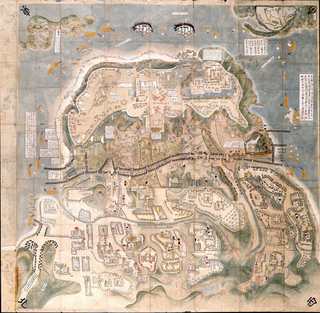
The Shimabara Rebellion, also known as the Shimabara-Amakusa Rebellion or Shimabara-Amakusa Ikki (島原・天草一揆), was an uprising that occurred in the Shimabara Domain of the Tokugawa shogunate in Japan from 17 December 1637 to 15 April 1638.

Hirado is a city located in Nagasaki Prefecture, Japan. The part historically named Hirado is located on Hirado Island. With recent mergers, the city's boundaries have expanded, and Hirado now occupies parts of the main island of Kyushu. The components are connected by the Hirado Bridge. As of March 1, 2017, the city has an estimated population of 31,192 and a population density of 130 persons per km2. The total area is 235.63 km2.
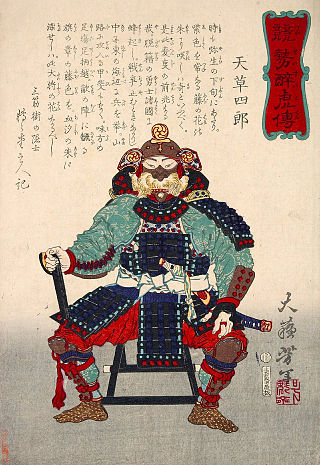
Masuda Shirō Tokisada, also known as Amakusa Shirō, was a Japanese Christian of the Edo period and leader of the Shimabara Rebellion, an uprising of Japanese Roman Catholics against the Shogunate. His Christian name was Geronimo and was later known as Francisco.

François Caron was a French Huguenot refugee to the Netherlands who served the Dutch East India Company for 30 years, rising from cook's mate to the director-general at Batavia (Jakarta), only one grade below governor-general. He retired from the VOC in 1651, and was later recruited to become director-general of the newly formed French East Indies Company in 1665 until his death in 1673.
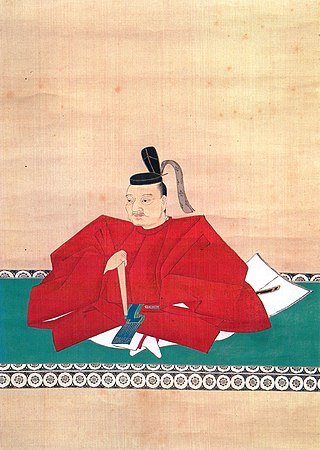
Itakura Shigemasa was a Japanese daimyō of the early Edo period. The lord of Fukōzu han in Mikawa Province, he was a personal aide to Tokugawa Ieyasu. Son of the Kyoto Shoshidai Itakura Katsushige, and younger brother of Itakura Shigemune.

Amakusa 1637 is a shōjo manga written and illustrated by Michiyo Akaishi. It is about the time-traveling adventures of six modern-day Japanese high school students from the St. Francisco Academy to the 17th century, where they take part in the Shimabara Rebellion. It was serialized in the manga magazine Petit Flower from 2000 to 2002 and in Flowers from 2002 to 2006, and was collected in 12 tankōbon volumes.
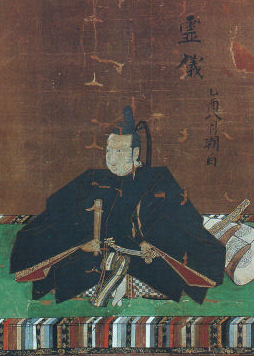
Matsudaira Tadamasa was an early to mid-Edo period Japanese samurai, and daimyō.
Matsudaira Nobutsuna was a Japanese daimyō of the early Edo period, who ruled the Kawagoe Domain. First serving Tokugawa Iemitsu as a page, Nobutsuna was renowned for his sagacity. He was named a rōjū in 1633. Nobutsuna led the shogunal forces to their final victory over the rebellion at Shimabara. His court title was Izu no Kami, which was the origin of his nickname, "Izu the Wise".

VOC opperhoofden in Japan were the chief traders of the Dutch East India Company in Japan during the period of the Tokugawa shogunate, also known as the Edo period.

Jacques Specx was a Dutch merchant, who founded the trade on Japan and Korea in 1609. Jacques Specx received the support of William Adams to obtain extensive trading rights from Tokugawa Ieyasu, the shōgun emeritus, on 24 August 1609, which allowed him to establish a trading factory in Hirado on 20 September 1609. He was the interim governor in Batavia between 1629 and 1632. There his daughter Saartje Specx was involved in a scandal. Back home in Holland Specx became an art-collector.
Cornelis Caesar was a Dutch merchant and Dutch East India Company official, serving as Governor of Formosa from 1653 to 1656.
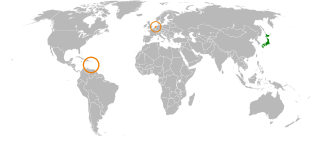
Japan–Netherlands relations are the bilateral relations between Japan and the Netherlands. Relations between Japan and the Netherlands date back to 1609, when the first formal trade relations were established.
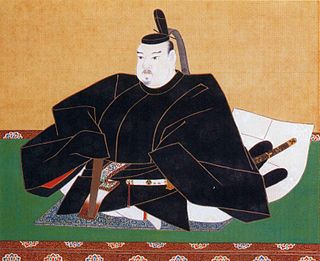
Willem Verstegen was a merchant in service of the Dutch East India Company and chief trader of factory in Dejima.
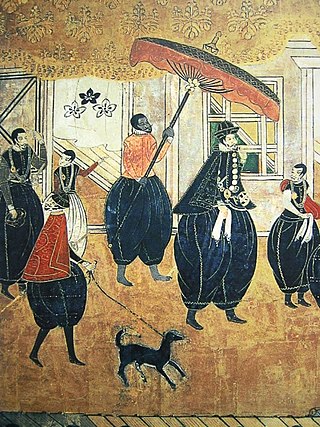
Nanban trade or the Nanban trade period was a period in the history of Japan from the arrival of Europeans in 1543 to the first Sakoku Seclusion Edicts of isolationism in 1614. Nanban is a Japanese word which had been used to designate people from Southern China, the Ryukyu islands, the Indian Ocean and Southeast Asia centuries prior to the arrival of the first Europeans. For instance, according to the Nihongi ryaku (日本紀略), Dazaifu, the administrative center of Kyūshū, reported that the Nanban pirates, who were identified as Amami islanders by the Shōyūki, pillaged a wide area of Kyūshū in 997. In response, Dazaifu ordered Kikaijima (貴駕島) to arrest the Nanban.
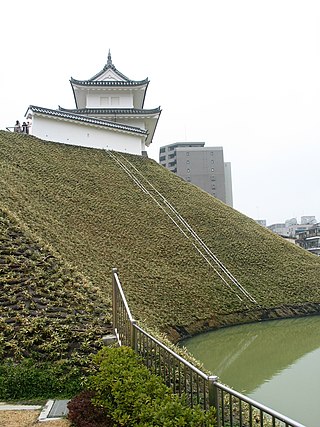
Utsunomiya Domain was a feudal domain under the Tokugawa shogunate of Edo period Japan, located in Shimotsuke Province, Japan. It was centered on Utsunomiya Castle in what is now part of the city of Utsunomiya. Utsunomiya was ruled by numerous daimyō clans during its history.
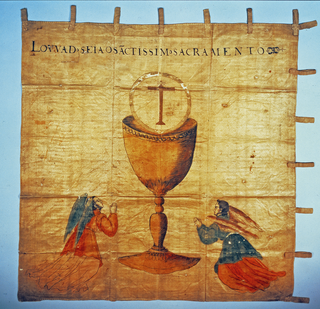
The siege of Hara Castle was the final battle of the Shimabara Rebellion. The news of an upcoming Shogunate army forced the rebel forces to retreat to the south, where they fortified themselves in the dilapidated Hara Castle and withstood a two-month siege, inflicting heavy casualties on the government troops.
Nicolaes is a given name that is spelled Nicolaas in modern Dutch.
References
- ↑ Moris, I. (1975) The Nobility of Failure. Tragic Heroes in the History of Japan, p. 167.
- ↑ Moris, I. (1975) The Nobility of Failure. Tragic Heroes in the History of Japan, p. 464.
- ↑ Kleinen, John (2007). Leeuw en Draak: Vier Eeuwen Nederland en Vietnam. Boom. p. 39. ISBN 978-90-8506-520-3.